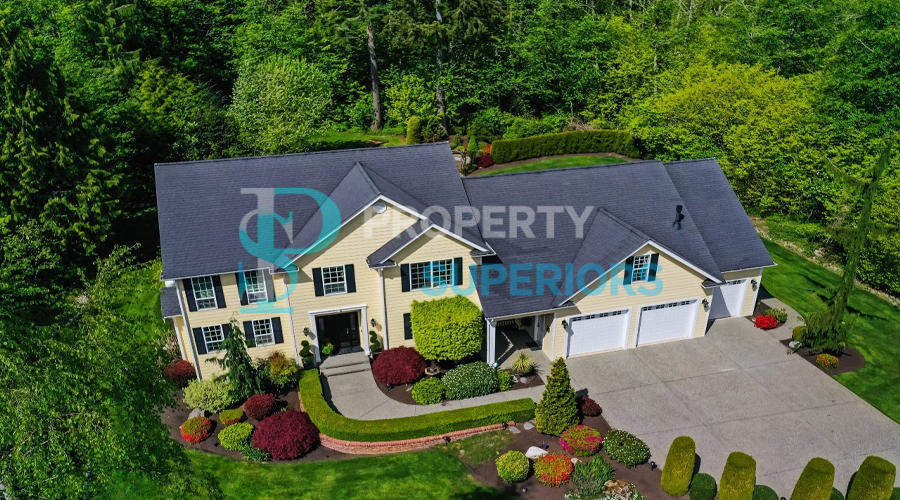
Home is a shelter that protects us from the warmth, rain, wind, dust, and animals within our habitat. Buying a property requires the choice of a good range of homes. Ultimately, it depends on the family’s budget, preferences, and needs, but it’s worth observing the various styles of houses, including single-family and multifamily housing.
It is common for people to maneuver around frequently. Some people board temporary houses, some in permanent homes, and a few in anything in between. Per their regional conditions, differing kinds of homes are listed below.
- Houses in cold regions: Igloos. The arctic and polar regions are characterized by extensive snow and severe cold. Snow blocks were accustomed build buildings during this region, sometimes within the shape of a dome. The dome form ensures that the space remains warm from the within. Additionally to being called a snow house, Igloo is additionally referred to as a winter shelter. Wooden houses. Thanks to North America’s chilly climate, many individuals construct log cabins and timber homes. there's many wood available and it does an incredible job of controlling the indoor humidity and temperature. Additionally, wood could be a superb insulator, which helps to stay the house comfortable in summer and winter.
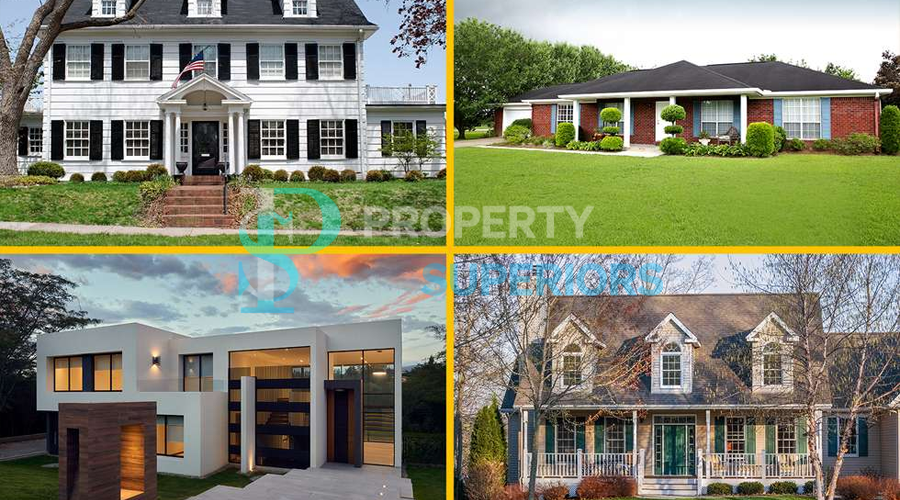
- Houses in hot and dry regions: Mud/Clay houses. A house is built using mud, straw, and other materials. Mud homes were the structures common in hot and dry areas. The system is indigenous to Mexico. Brick houses. Egyptians used baked mud bricks in hot and dry areas. These bricks were better when cooked. Egypt’s buildings were perhaps the primary within the world to be constructed with bricks. Brick was used rather than mud and straw and it's composed of clay that's shaped, dried, or burned. Bricks are wont to construct a major proportion of homes in cities nowadays.
- Houses in hot and wet regions: Huts. Africans construct homes in an exceedingly hot and rainy climate. in this a part of the globe, they use lots of grass, leaves, and vines. Straw and dust walls help the house stay cool within the heat.
- Other forms of houses: Stilt houses are usually found in areas with high precipitation where flooding occurs. Stilts lift the development above the bottom to stay the house dry. you will often see this home style in some areas of East Asia and geographic area. Temporary houses are used for both camping and holidays. Many fishermen use wood or coconut leaves to make homes near the coast. However, individuals have changed their approach to putting together temporary housing, wishing on more advanced materials. The usage of tents for weekend camping is common. In times, waterproof materials like canvas fabric and nylon are wont to make tents. Tipi or tepee could be a cone-shaped tent constructed from animal product or birch bark utilized by native Americans. The housing is thought as a caravan. Either a horse or a car can pull the caravan. it's common for people to relocate from one town to a different with caravans. A houseboat may be a floating home on lakes and other styles of water. they are available in numerous sizes, some are small et al have two stories. While some individuals just use it for vacation purposes, others like better to live there. Hong Kong, Netherlands, and a few other countries use houseboats.
Here are all the house types supported different structures and styles.
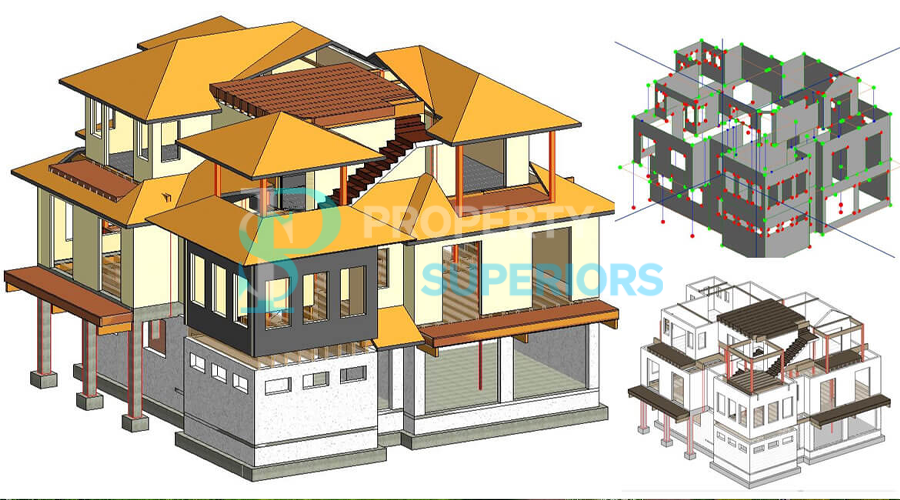
1. Chalet
Goat and sheep herders’ cabins are the origin of the chalet, which may be a quite Swiss cottage. Usually found within the mountains, it's being employed as a vacation house nowadays. However, with the rising popularity of skiing, chalets are typically holiday homes with access to slopes.
The word chalet originated within the Arpitan-speaking area of Switzerland and therefore the French Savoy, it absolutely was cited because the herder’s cabin within the beginning.
The term chalet applies to some distinctive features of construction. Both the roof and also the overhangs are rather steep. This roof style is supposed to handle heavy snowfall. a standard chalet-style residence encompasses a roof with a gently sloping incline and protruding eaves.
Swiss chalets are prominent in Switzerland and Germany throughout the 18th century. It took its name from the final kind of the roofs and facade. within the mid-19th century, the planning style was delivered to private houses, hotels, and tourist parks. within the early 20th century chalets made their peak, especially in Ohio and Colorado.
After the Alpine tourist industry became prominent, vacation houses changed into ski lodges and hiking destinations. During the last several decades, the word “chalet” transformed from Alpine-style vacation houses to any reasonably mountain residence.
In Quebec French, a vacation or summer home near a incline is thought as a chalet no matter a Swiss chalet.
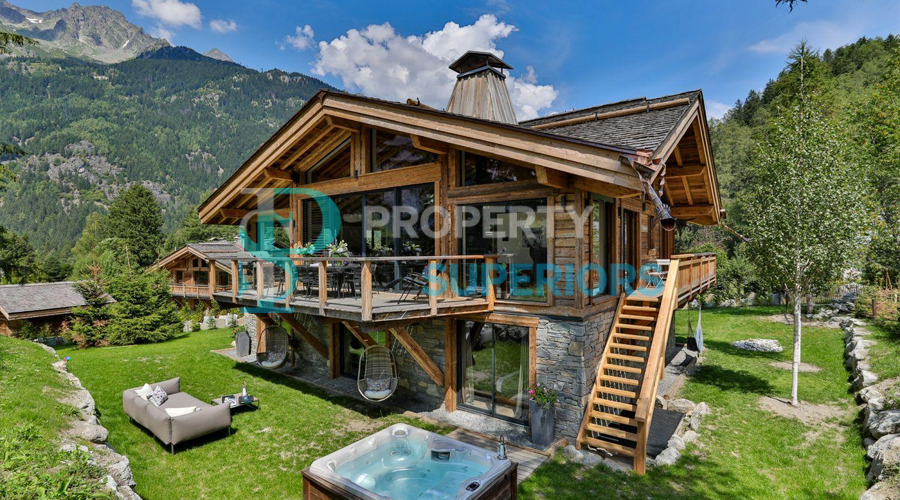
The advantages of chalets are listed below.
- Chalet houses are more cost-effective than residences since they’re built using simple materials and basic designs.
- Chalet homes provide many possibilities for private and complicated artwork with their expansive windows, wide overhangs, and exposed construction. Using ornamental shingles and carved rafters to decorate the roof may be a popular choice.
- It is affordable still. The project costs around US$20,000 generally, which excludes the price of the land and therefore the interior.
2. Cave
A large number of individuals formerly resided in caves. it had been pretty straightforward during a primitive sense. Building something new is senseless when nature has already provided a structure. While most cave houses were able to use, some societies made cities of an outsized complex with beautifully designed caves.
Buildings in Santorini are characterized by their simple design and adaptability. Volcanic materials like black rock, red rock, and stone have resulted in domes and cave houses on the island. These caves are affordable and easy to make. They were preferred as housing because they were inexpensive and utilized with natural materials.
Some of Santorini’s villages are situated on the sting of the caldera cliff, others stretch outside the walled castle town, referred to as Karelia, and a few are tucked among the rocks in several directions. Cave homes cost US$230,000 on the average.
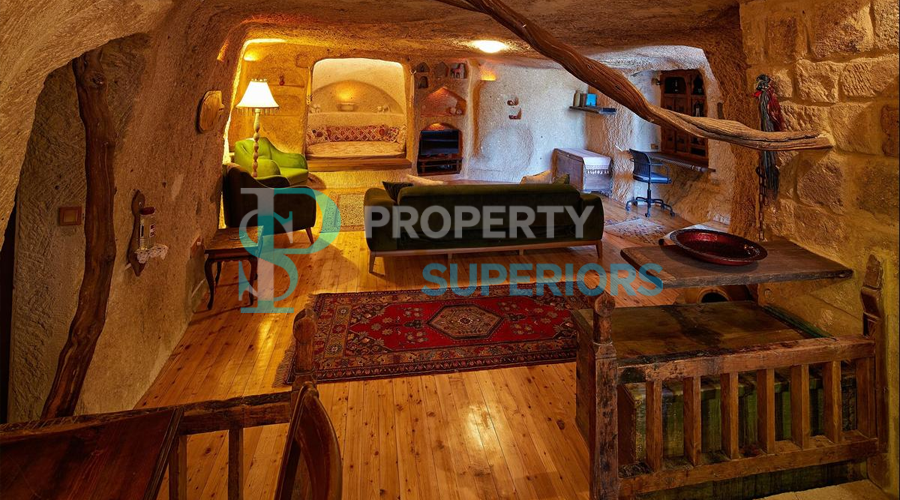
The advantages of caves are listed below.
- Ecological cave houses will enjoy heating and electrical costs, reduced up to 80%.
- They have thermal features naturally.
- Rocks provide a wonderful retarding force.
- A cave could be a natural shelter against war and weather.
- Cave homes may have a lower cost than typical above-ground houses.
- Cave houses provide the advantage of getting only two sides to preserve rather than four.
3. Mansion
A mansion is defined as a giant residence of a minimum of 12,500 square feet in size, although there's no legal specification that defines a mansion.
The cost of a mansion ranges from US$750,000 to US$8 million. Buying a house is a luxury itself. Mansions have rooms to assist guests rest and entertain themselves. Movie theaters, spas, and libraries are a number of the facilities featured in these rooms.
Apart from the amount and size of the rooms, additional features determine if a home is a mansion. the everyday features of a mansion are listed below.
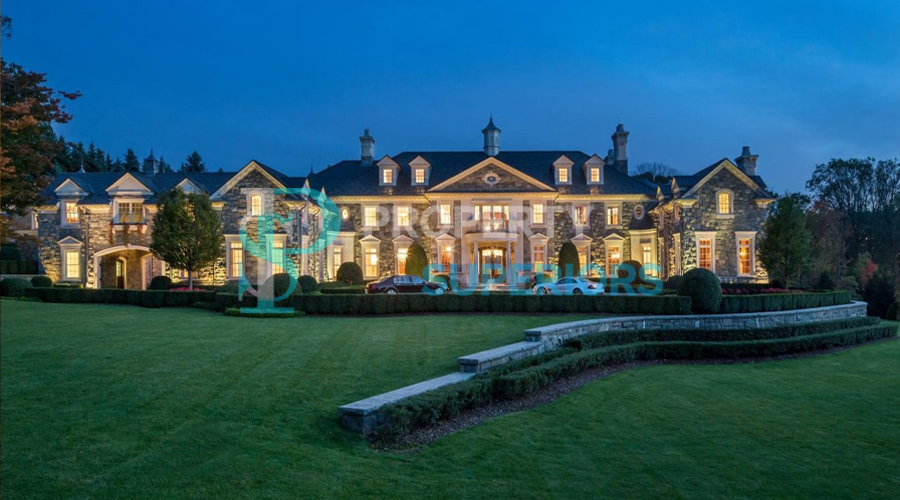
- Entertainment facilities, residential lounges, commercial salons, and billiard rooms were necessary for 20th-century houses. An entertainment-centered modern mansion has several essential features, like bars, enormous great halls, and indulgent game rooms. These homes also include several kitchens which implies a snug stay for guests.
- Before the 20th century, greenhouses, conservatories, and libraries were vital for relaxing during the workday. Today’s features like extensive spa facilities, home theaters, gyms, and high-tech media rooms may even include a high-tech safe space if you reside in a very mansion.
- Today, luxurious estates have zen gardens, sports facilities, water features, automobile courts, huge garages, fire pits, hiking paths, and guesthouses.
- Top-quality woods, stones, and every one the simplest textiles are the foremost common materials to make and decorate mansions to fit your taste.
4. Dome/Round Houses
A dome house is formed as spherical or ellipsoidal with a wooden or other structural structure. In most cases, the initial price of a monolithic dome is such as a custom-made, standard-interior residence.
If you wish to shop for a house that costs US$100,000, you'll spend the identical amount for a dome home. However, the expenses of a monolithic dome will always be lower because of long-term and daily cost savings.
There is a limiteless number of design options. An open architectural plan encourages experiments with design ideas. the within structure of a dome house is an independent work other than the dome itself.
The advantages of a dome house are listed below.
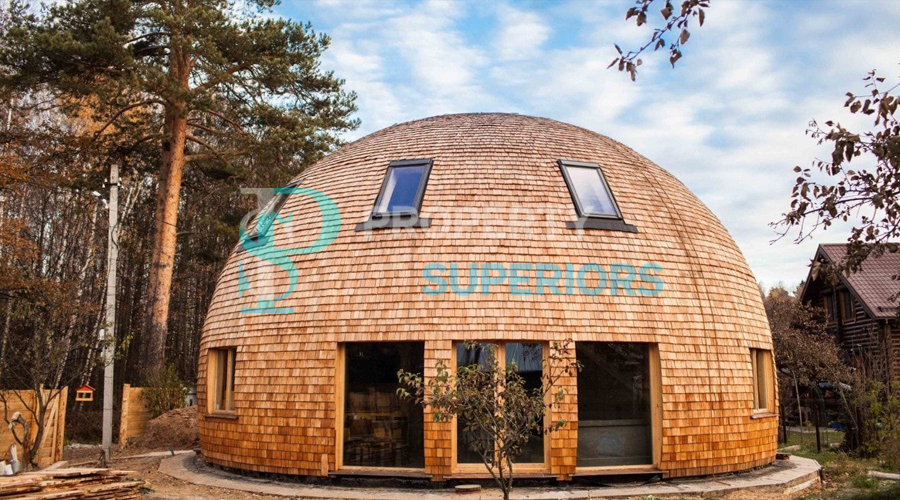
- Energy efficiency
- Disaster-proof
- Cheaper to make than traditional houses
- Endless design possibilities
5. Cabin
People are uncertain whether a cabin or a cottage is more sort of a house. While a cabin typically suggests a basic, rustic, and minimalist place, a cottage refers to a more luxurious place to remain.
Cabin structures are more primitive than cottage buildings. Cottages are often rural or urban, while cabins are always rural. Some say a cabin includes a log-built structure.
Log cabin constructions fill their space by stacking with a plaster-like mixture of moss, mortar, mud, or dried manure. Log cabins are typically found in forests because the building materials are plentiful.
A cabin building kit for a one-bedroom home costs approximately US$30,000, while a four-bedroom house with two bathrooms, a balcony, and a deck would cost about US$80,000. the standard price of a five-bedroom cabin or a custom construction can go up to many thousands of dollars.

The advantages of a cabin are listed below.
- Better air quality. Wood is thought for having several air-cleaning features.
- It improved psychological well-being. A log cabin’s nature-like ambiance may benefit one’s mental state.
- Eco-friendly.
- Natural insulation for temperature control.
- Encourages a more active lifestyle.
6. Single-Family
The advantages of a one-family residence are listed below.
- Tenants who like better to board single-family homes are more likely to remain for a protracted time.
- Lower taxes on property.
- Reliable resale value.
- Lower administrative expenses.
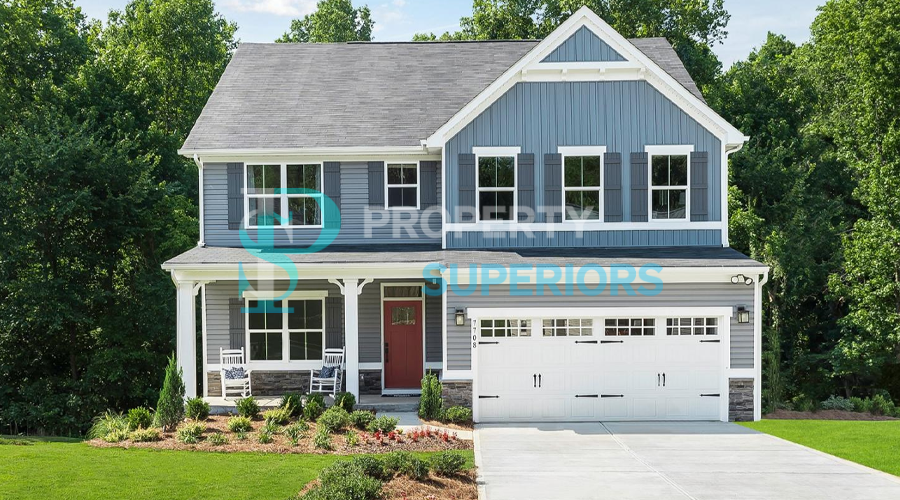
7. Apartment
An apartment refers to an apartment within a building. The structure could also be used as a single-family home, a condo complex, or an residence.
For a median of US$64,575 to US$86,100 per unit, you'll have a mid-range building with a basement, functional doors and windows, and other appliances. in keeping with the given numbers, the value are around US$85 and US$200 per square measure.
The advantages of apartment living are listed below.
- Easy care and maintenance.
- Increased safety and reduced expenses.
- Rich in great amenities.
- Excellent area people.
8. Ranch-style
Ranch-style homes are single-story residences that include open-concept floor plans and a chosen patio area. The expansive windows and low-pitch rooflines are features of ranch home designs. Ranch-style houses may have several floor plans.
The three hottest exterior materials in ranch-style homes are brick, wood, and stucco. Having a garage attached to the home is typical. Ranch-style homes with big windows are generally well-designed.
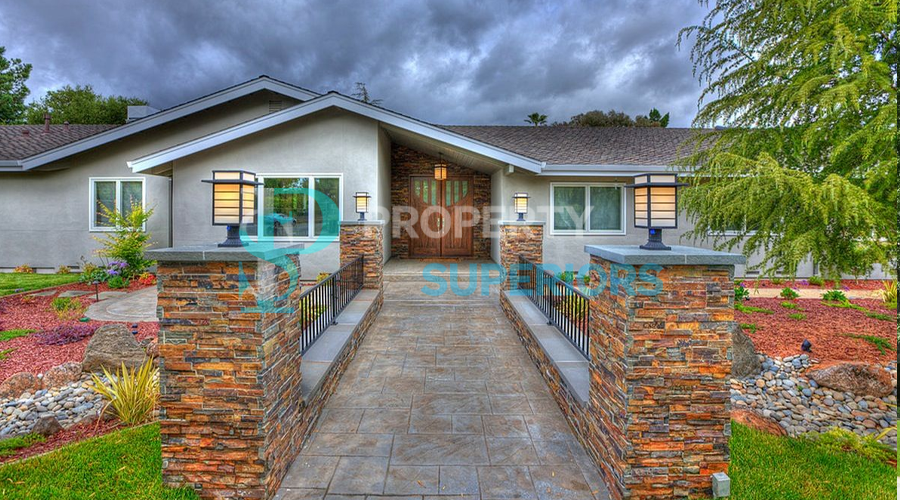
The advantages of a ranch-style home are listed below.
- Having no staircases lead to more room for the living area, increasing the general way.
- Ranch-style homes were considered to produce easy accessibility to the yard. Huge glass doors that slide intent on access yards, decks, patios, or pools are standard.
- Because there aren't any steps, parents with young children will find the place safer. Additionally, senior citizens who struggle climbing up and down the steps may like living in single-story homes.
- You will have quick access to windows, trim, and therefore the roof, so you'll fix the house on your own or paint it yourself.
9. Townhome
Townhouses are multi-story buildings that have an entrance on one or two sides of the building. thanks to their nature, townhouses within the suburbs are homogeneous houses created as a part of a clearly defined neighborhood.
The townhouse may be related to a homeowners organization. While costs can range from US$100 to US$350 reckoning on the neighborhood, it’s important to notice that there is also additional fees. a personal entry and multiple-level plan is the same as a single-family house without the prices of the land.
A townhouse is more personal than a condo, whether or not they share a wall. The homeowners association offers some advantages and protections, it also provides more significant space. A townhouse could also be a wise investment.
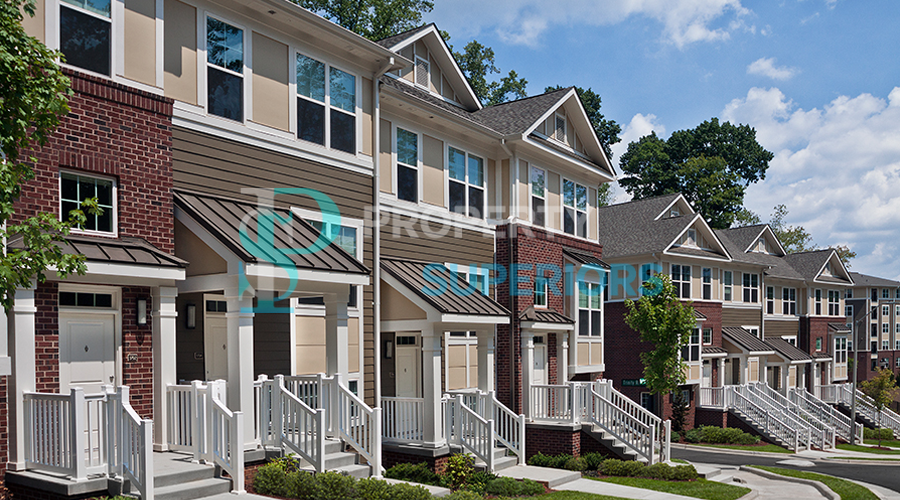
The advantages of a townhouse are listed below.
- Low market value
- Easy maintenance
- Common area amenities
- A sense of community
10. Tiny Home
A tiny house is a bit house, either permanent or moveable. it's as small as 100 square feet or as large as 400 square feet. Tiny homes are incredibly capable of various layouts and styles and frequently seen as modern varieties of houses.
As home buyers are decreasing, many are finding value within the option of co-living. Pricing can range from US$10,000 to US$100,000, counting on whether you build it yourself or have it made for you.
Old-fashioned materials like wood and sheet are often utilized in framing a little house thanks to their effectiveness in protecting the structure from harsh weather and providing little insulation.
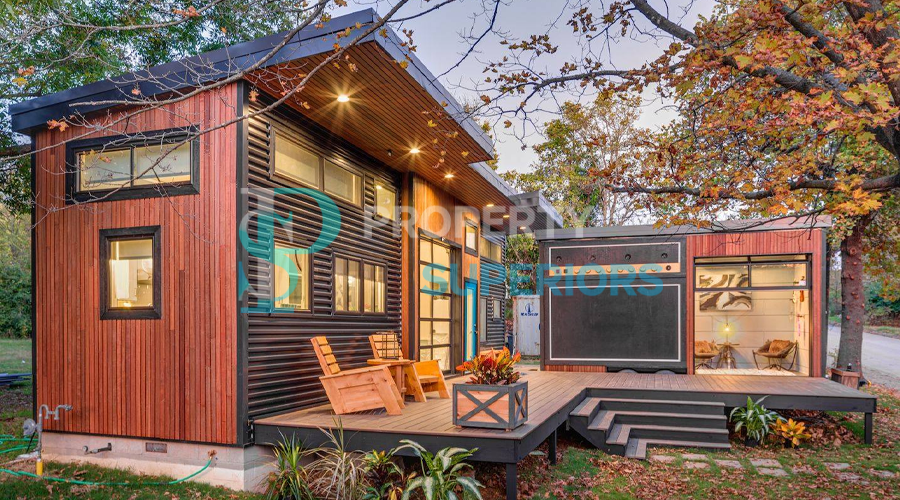
The advantages of a small house are listed below.
- Reduced costs.
- Mortgage-free. for many individuals, buying a property without employing a mortgage is an impossible dream. A 30-year mortgage with a 4.5% rate adds US$18,000 to the typical price, bringing it to US$482,000.
- Low energy use.
11. Bungalow
Bungalows are often single-story or single-level homes or cottages constructed with a pitched roof. Dormer windows and patios are common in bungalow sorts of houses.
Building a single-story home may cost anything from US$181,000 to US$552,000 on the average. As a result, the worth of a bungalow depends on the worth of land and also the plot’s dimensions.
The materials utilized for bungalows often keep the house warm. Cedar shingles and natural-colored wood are popular as siding materials, although clapboard is that the most frequent. Building blocks product of stone, brick, or concrete were also used, a number of them shaped into fancy ornamental forms.
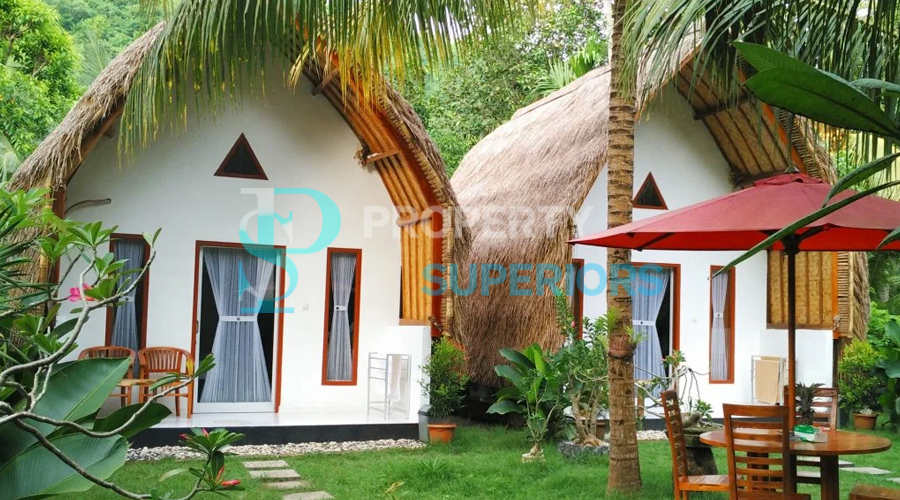
The advantages of a bungalow are listed below.
- Usually have a lower value.
- Can be private.
- Modifying a bungalow is way easier than an everyday house.
- Have a more value.
Related posts:
"Smart Homes" are homes that have the latest technology. All of the parts of the house are controlled by technology, so they are fully automated. That means you can control everything in your home with the touch of a button,...
The process of interior design supervision involves the designer overseeing the execution of all tasks, including design, selecting personnel and materials, renovating existing spaces, and completing the project as planned.
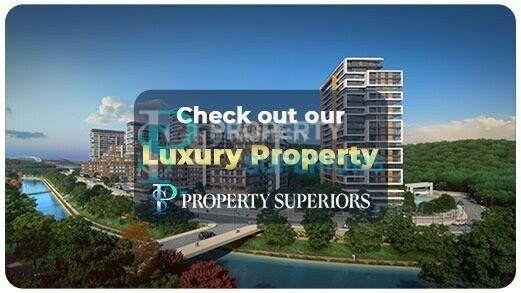



 New provisions for obtaining Turkish citizenship through real estate ownership
New provisions for obtaining Turkish citizenship through real estate ownership
 Turkish Real Estate Rental Law 2024
Turkish Real Estate Rental Law 2024
 Ways to obtain Turkish citizenship through investment 2024
Ways to obtain Turkish citizenship through investment 2024
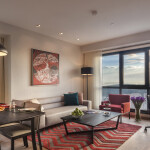 How to choose an ideal apartment in Turkiye?
How to choose an ideal apartment in Turkiye?
 Turkish passport... Extraction method and fees 2024
Turkish passport... Extraction method and fees 2024
